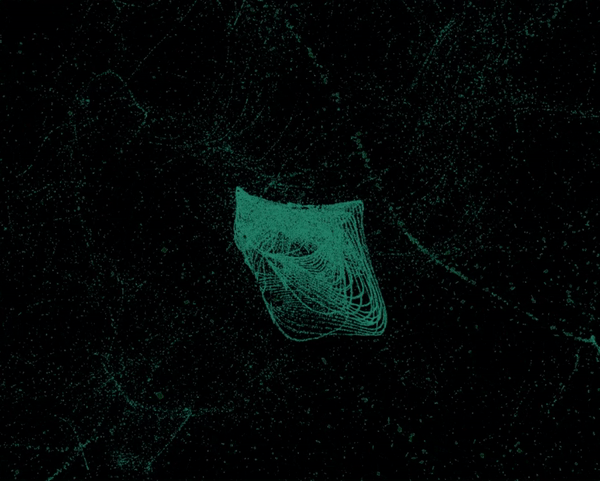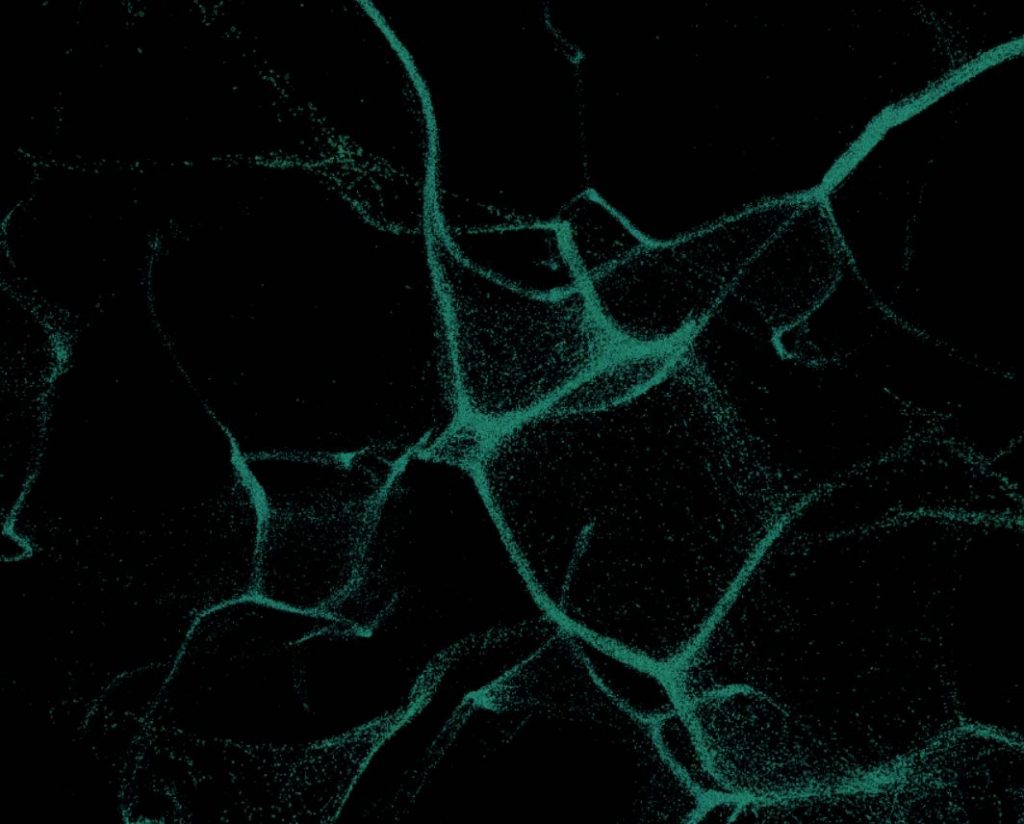Exhibition dates
Friday, 19th to Sunday, 28th of March 2021
viewed at Inspace City Screen, 1 Crichton Street, Edinburgh, EH8 9AB
Video credits
Sound design: Thomas Cross and Herve Girardin
Filming and editing: Video Production Edinburgh
THE PROJECT

Referencing Yuval Harari’s Sapiens: A Brief History of Humankind, Asteria Creative’s second project, Universal Matter explores curiosity and care as drivers for space exploration.
Moving away from pessimistic narratives of humanity leaving a broken Earth behind, Universal Matter uses data visualisation to bring to light the interconnectivity between human realms of experience and, the perhaps, more numerous arenas we play no part in or have limited relevance.
In his research, Harari presents a series of concentric layers, representing the hierarchy of identities through which we experience and see the world. We adapted his approach to include an equal number of human and non-human layers: 1) the microscopic; 2) the self; 3) the community; 4) human borders and boundaries; 5) humanity; 6) animate biosphere; 7) inanimate biospheres and, finally, 8) the Universe itself.
Whilst seven of the data inputs for the visualisation will be coming from existing data streams, “the self” will be an interactive input thanks to a motion sensor placed in the Inspace window. Passers-by will generate their own live data via the sensor and feed directly into the visualisation alongside the other streaming data from the other seven sources.
Universal Matter, as a live, responsive artwork is a way to visually interact with ideas of “otherness”. By placing human and non-human agents on the same footing, there is a chance we can recalibrate our relationship with the things, beings and matter around us.
THE PROCESS
Starting with collaborative discussions on “universal empathy” and the nature of “otherness” — as well as some creative play with related data streams — we have tried to look beyond our own human-centric viewpoint and experience to explore different ideas of overlap, co-dependencies and symbiosis that are woven into the texture of world and universe around us.
This led to different ways to visually express and explore this “universal empathy” and helped us re-look at how we, as humans, see and define “otherness” in the systems, subcultures and species we interact with. This research draws from both art and science but is also strongly informed by common experience, understanding and intuition.
The discussion of how to have all the levels of experience, identity, and understanding converge into one place led us to create a visual representation in which the audience could not only see, but also interact with all the other layers, fitting the philosophical idea of the project. The steps then were to select varied data streams from each layer and interlinking them in Touchdesigner, leading us to gather several data sources from online API’s, archival audio samples, and our own sensors, and interlinking them. The biggest driver of motion is the street facing motion sensor, representing “the self”.


This process gave rise to a unique, living-like entity with an underlying structure and symmetry that at times appears to be chaotic. The visuals come to resemble anything from early galaxy formation, to intricate networks of neurons, to microorganisms gently drifting in the sea, to the Lainakea supercluster.
THE DATA
We mix and overlay representative layer feeds from diverse physical locations both on and in the Earth, in our cities, skies and oceans and beyond. Using Harari’s initial layers of experience mixed with our selected real-world data promised new parameters and boundaries as well as demonstrates more dynamism emerging from the merged feeds. Through interweaving these feeds, a curious complexity emerges: a type of breathing perhaps? Maybe an uncertain intelligence becomes visible?
We assigned the following data feeds to our eight named layers of experience:
- Live Motion data from a Kinect sensor facing the street from within InSpace, which is activated when people move across and interact physically with the sensor in front of the projections. This represents the Self layer.
- Live electrical impulses from a plant, obtained from Electrocardiogram sensors on a snake plant represents the Microscopic layer.
- Live person counter, counting the number of people passing by the exhibition, using an Infrared Motion sensor. This represents the Community layer.
- Fragment from Nikola Tesla’s autobiography, audio, describing the power of seeing Humanity as one whole, unified entity. This represents the Humanity layer.
- Audio from the UN Archives, dated 1963. UN’s description: “Hollywood Star Richard Conte lends his voice to tell the harrowing tale of the work of UNESCO improving the lives of illiterate and impoverished families through education.” This represents the Human Boundaries layer.
- Live wave height and period in the North Sea, obtained from “Stormglass”, which collects worldwide data on ocean health, ocean weather, and so on. This represents the Biosphere – Inanimate layer.
- Live recording of Jellyfish from the Monterey Bay Aquarium. This is our representation of the Biosphere – Animate layer.
- Live Coronal Mass Ejection data from NASA satellites, accessed through the NASA online portal. This is our representation of the Universe layer.
With the additional input of time and reflection given by the viewer, Universal Matter can generate surprising visual alliances, repeating rhythms and spontaneous synchronicities allowing the viewer to tune in to and directly interact with a sampled universal experience.
Different experiences and interpretations will result at different times when viewing Universal Matter . As a viewer, both reflection on and interaction with the work are encouraged. Perhaps Universal Matter makes visible what was always there? Perhaps it helps us visualise awareness of our surroundings? Perhaps its curious cross-wiring gives us an insight into ourselves as we try to navigate the day or the way ahead? Or give us a sense of belonging not to a community, or a nation, or a biosphere, but simply to the Universe?
THE TEAM
- Gonzalo Gil – Physicist
- Polina Chizhova – Artist & Art Historian
- Tom Cross – Sound Designer
- Linda Di Felice – Physicist
- Herve Girardin – Sound Designer
- Divyanshi Gupta – Animator
- Ewan Robertson – Sculptor
- Tamara Rogovic – Visual Artist
- James Stephen Wright – Artist
Asteria Creative have initiated two projects in the last 6 months centred around three main philosophical propositions (you can read more about these propositions at www.asteria-space.com/creatives.
Universal Matter, as our second project, is inspired by the idea that “Space exploration is about curiosity, not about leaving a broken Earth behind.”
CREDIT & THANKS
- The United Nations AV Library, Radio Classics – https://www.unmultimedia.org/classics/
- NASA Space Weather Database of Notifications, Knowledge, Information (DONKI)
- Stormglass, Live Ocean Weather API
- Ray Interactive, for their help with the visualization
Exhibition production by:
Dr Evan Morgan, Research Software Engineer, and Jessica Armstrong, Research Projects Producer at Design Informatics and Inspace curator.
Website: asteria-space.com/creatives
Instagram: @asteria_creatives
